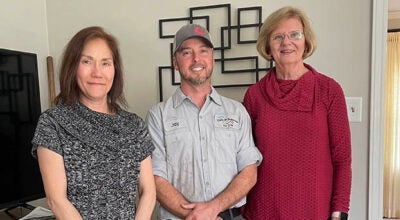Books for beginning readers
Published 9:01 am Tuesday, June 20, 2017
When your kids begin to read independently, don’t expect to find the “See Spot run!”dialogue of an earlier generation of children’s books, Longwood University researchers say.
The category of books known as early readers, now more sophisticated than in the past, deserves attention from scholars, says a Longwood specialist in children’s and young adult literature — and she has followed through on that belief. In a collection of essays coedited by Dr. Jennifer Miskec, these books are treated as literature rather than simply as vehicles to help children learn to read.
“More and more of these authors are getting creative, clever and playful,” said Miskec. “Early reader books are often thought to be tools to get kids to read, but the writing these days is better than many people think. These books are simple but not simplistic.”
Early reader books, typically consisting of about 10 chapters and about 100 pages, are written for readers who are just beginning to read on their own, usually around age 8 or 9, said Miskec.
“It’s easy to dismiss these books because they used to be formulaic and in the past were seen more as a literacy project,” she said. “They still adhere to a formula, and some books can be heavy-handed and didactic, but now there’s a playfulness about many of these books, with humor, good dialogue and interesting characters and plots. The books can be literary.”
Miskec pointed to the popular “Ivy and Bean” series by Annie Barrows as an example of the “really interesting craft” taking place in early reader books — interesting enough for Miskec to have written and published scholarly articles on the series. She also is a fan of the “Anna Hibiscus” and “The No. 1 Car Spotter” series by Atinuke and the Alvin Ho and “Ruby Lu” series by Lenore Look.
“The ‘Anna Hibiscus’ books, set in Atinuke’s native Nigeria, touch on a diversity of issues, including poverty, social class and disability,” she said. “For example, in one book, Anna, who is not poor, goes home after seeing poor kids selling oranges, and she sells oranges from her orange tree until she finds out that it’s hurting the poor kids. These are some hard facts about poverty. Atinuke and other authors are encouraging serious, high-stakes stuff.”
“Atinuke understands that even though readers might be new to this, that doesn’t mean they don’t know how to think. Even though they may be 7 or 8, she doesn’t imagine them as naïve or less intelligent but as interested, curious and smart. Just because they’re 7 doesn’t mean they don’t know about poverty or disabilities.”
Miskec said that, although authors sometimes underestimate the abilities of young readers, the tide is changing, and more and books that challenge this group are becoming available.
Miskec’s book, “The Early Reader in Children’s Literature and Culture: Theorizing Books for Beginning Readers,” was coedited with Annette Wannamaker of Eastern Michigan University.





